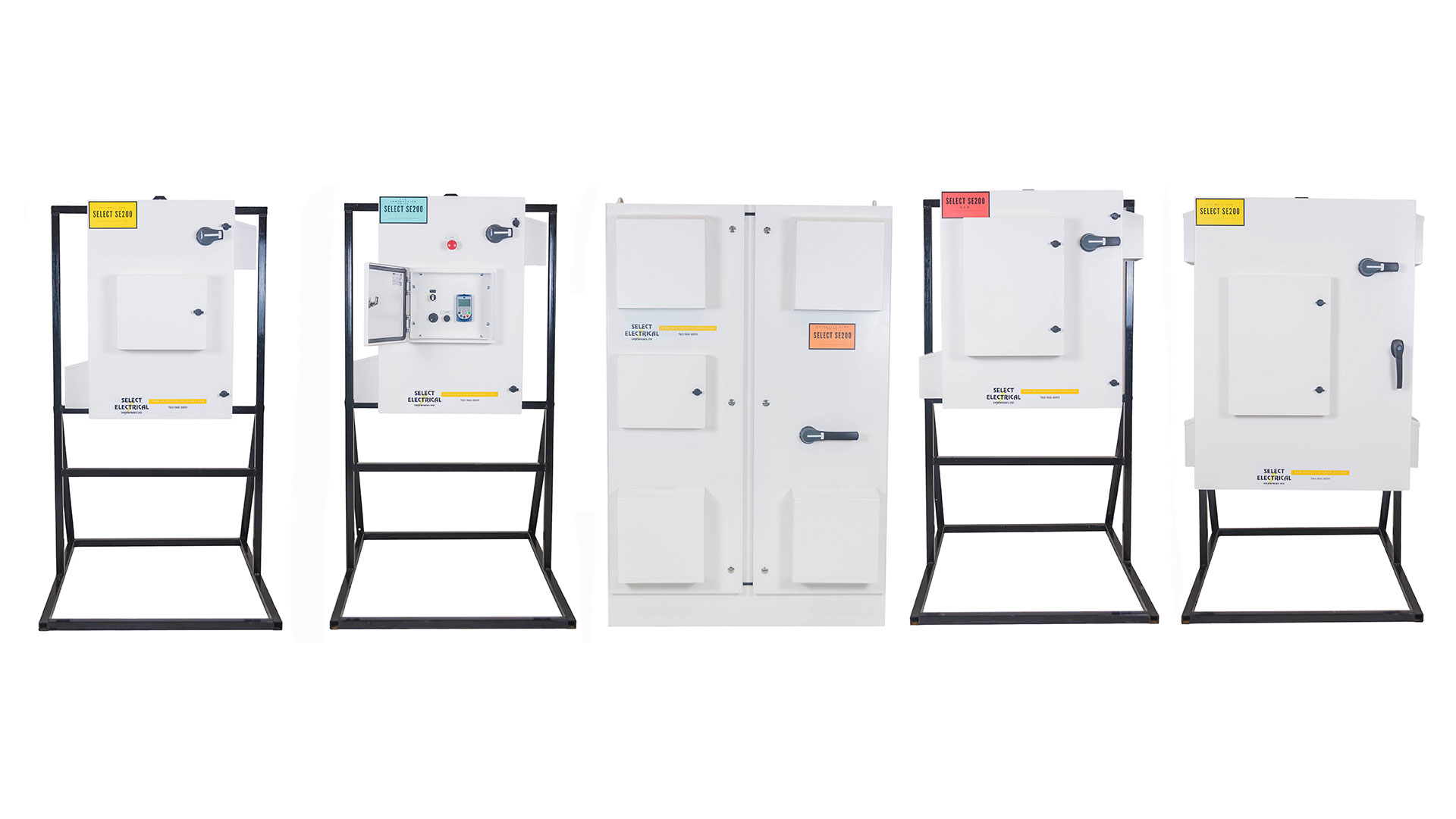Benefits of VFDs
Introduction:
In today’s rapidly evolving industrial landscape, Variable Frequency Drives (VFDs) have become an essential tool for optimizing motor performance across countless applications. Whether it's precision farming or complex oilfield operations, VFDs offer superior control, efficiency, and longevity for AC motors. While soft starters are excellent for limiting inrush current and mechanical stress at startup, VFDs go a step further — offering dynamic speed control and consistent performance across varying load demands.
What is a VFD?
Variable frequency drives (VFDs) control the speed and torque of an AC motor by adjusting the frequency and voltage of its power supply. By doing so, they can replace traditional mechanical controls—such as valves in pump systems or louvers in fan systems—by supplying only the necessary power to meet real-time system demands. VFDs continuously adapt motor output to match changing load requirements, improving overall efficiency. They can also function as phase converters, transforming single-phase input into three-phase inverter output. A typical VFD consists of a rectifier that converts AC to DC, a capacitor that stabilizes the DC power, and an inverter that converts it back to AC at a variable frequency. This technology greatly enhances energy efficiency by aligning motor speed with the actual load, making it especially effective in variable torque applications like fans and pumps.

VFDs in Agriculture: Precision, Longevity, and Control:
In agriculture operations, motors power critical equipment like irrigation pumps, grain augers, conveyors, fans, and feeders. These systems often run in varying load conditions depending on the season, weather, and specific crop needs.
Benefits of VFDs in Agriculture:
- Precise Speed Control – Adjust pump or fan speeds to match crop requirements, reducing water and energy waste.
- Reduced Mechanical Stress – Smooth starts and stops extend the life of pumps and conveyors.
- Protection from Voltage Fluctuations – Helps maintain consistent motor operation in rural areas where power quality can vary.
- Lower Maintenance Costs – Less wear and tear from harsh startups translates into fewer breakdowns.
Example:
- A VFD-equipped irrigation system allows farmers to maintain constant pressure even when fewer sprinklers are in use, maximizing crop yield and saving electricity.
VFDs in Oil & Gas: Safety, Reliability, and System Optimization
The energy industry often deals with demanding applications, from pumping crude oil and gas compression to drilling and refining. In these environments, motor reliability, safety, and performance are non-negotiable.
Benefits of VFDs in Oil & Gas:
- Enhanced Process Control – VFDs allow operators to adjust motor speeds to match flow rates, pressures, or system load requirements.
- Energy Savings on Large Equipment – VFDs reduce power consumption, particularly on pumps and compressors with varying load profiles.
- Reduced Equipment Wear: Eliminates the shock from full voltage starts, improving the lifespan of mechanical systems like pumps and blowers.
- Improved Safety – Lower mechanical stress reduced the risk of catastrophic failures and operational hazards.
Example:
- A crude oil pumping station using VFDs can ramp up flow gradually, preventing pressure surges that could damage pipelines or valves.

VFDs for Power Savings: Energy Efficiency in Every Industry:
In most motor-driven systems, the load demand varies throughout the day. Without a VFD, the motor runs at full speed regardless of how much output is required which wastes electricity. A VFD prevents this by adjusting the motor’s speed to precisely match the load, which means the motor only uses the energy it needs at any given time. This dynamic control not only reduces power consumption but also lowers wear on the motor and connected equipment. Making the switch to VFDs isn’t just a cost-saving decision, it also reduces energy usage and minimizes your facility’s carbon footprint.
Benefits of VFDS for Energy Efficiency:
- Smart Motor Management – VFDs can be programmed for auto shutdowns, sleep modes, ramp up/down sequences, and load-following operations, all of which reduce power consumption during idle or low-demand periods.
- Improved Power Factor – VFDs help improve power factor by managing the reactive power drawn from the grid, which can reduce penalties on utility bills and improve overall power quality.
- Lower Peak Demand Charges – By soft-starting motors and adjusting speed based on real-time demand, VFDs can help reduce peak electrical loads which are a major cost driver for industrial facilities.
Example:
- In a data center, cooling systems are critical but don’t always need to run at full capacity. With VFDS on cooling fans and pumps, the system adjusts to real-time heat loads, reducing energy use during off-peak hours and improving equipment lifespan.
If you operation depends on motors running efficiently under varying loads, a Variable Frequency Drive might be the best investment you can make. Compared to traditional starters of fixed-speed systems, VFDs provide smarter control, higher efficiency, and long-term cost savings.
Interested in a VFD?
At Select Electrical Enterprises Ltd, we supply and support a wide range of VFD systems, including WEG drives known for their reliability and advanced features. Whether you’re in agriculture, oilfield services, or general industrial operations, our experts can help you select and install the right solution for your needs.
If you are interested or have any questions about what option is best for you, we encourage you to reach out to us by giving us a call (780-968-8859) or by filling out our online contact form. Our team of experts will work with you to ensure the best option for your operations.
